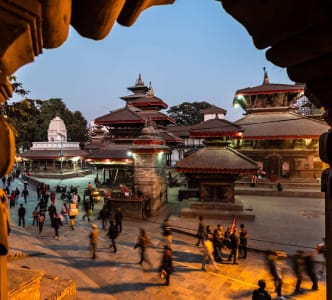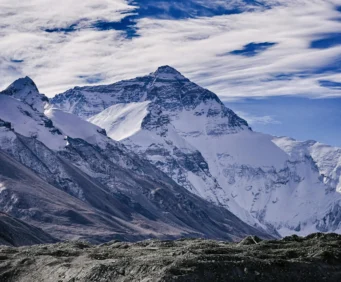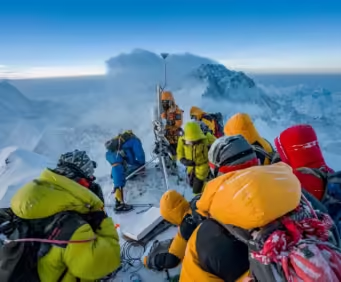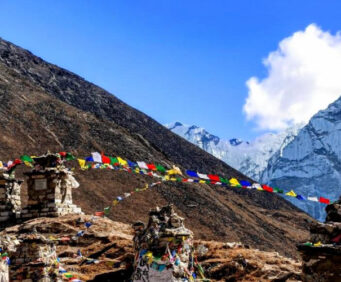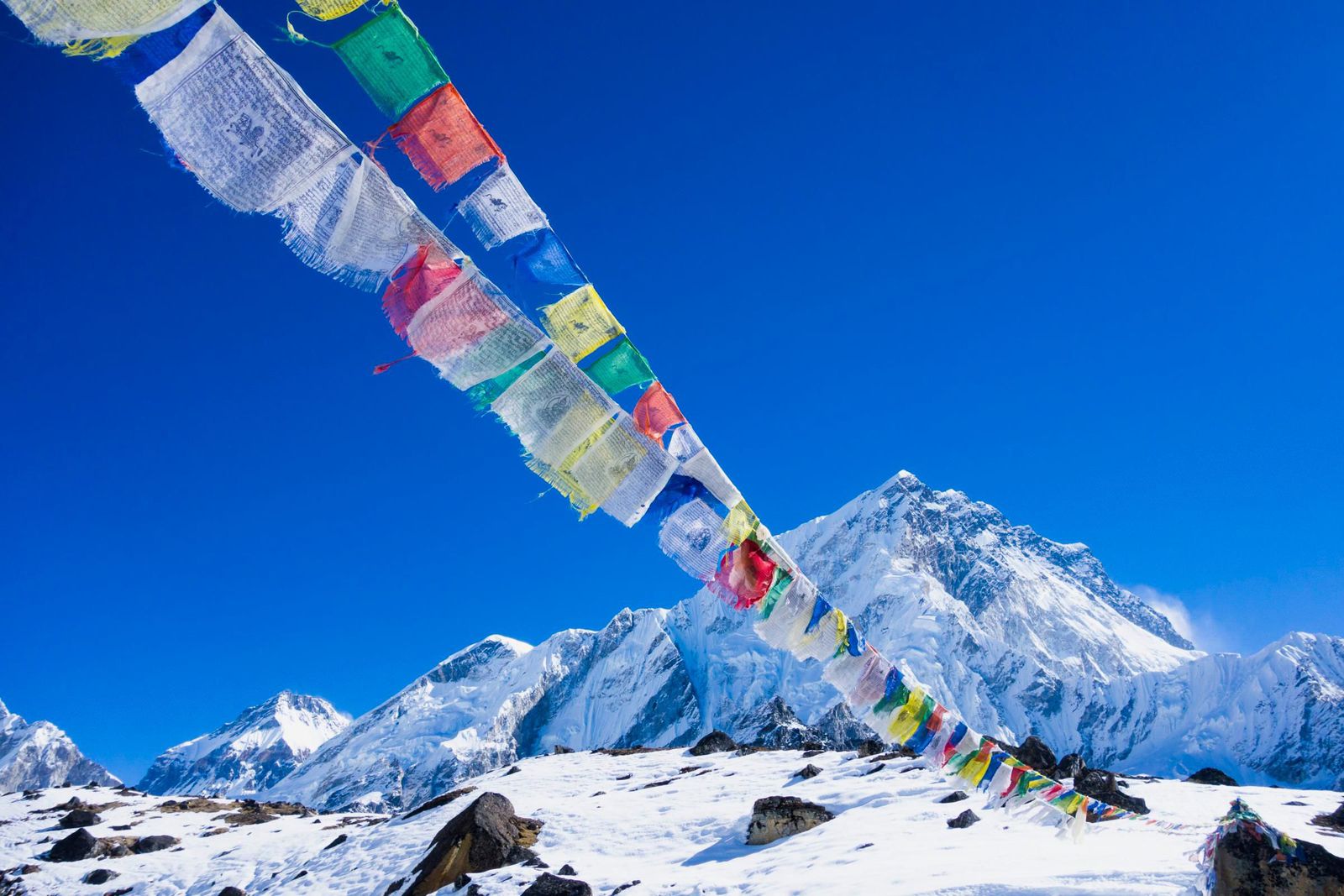
Everest Base Camp Difficulty
3rd December, 2023 - Posted By: Himalayan AbodeThe question of how difficult the Everest base camp trek is is at the forefront of every trekker’s thoughts, from beginner to expert. To be quite honest, there isn’t an exact answer. On the other hand, trekking is often coupled with a great desire to find new mountains. With enough zeal and minimal physical fitness, it is therefore possible to trek to the summit of Everest. The legendary journey to the top of the globe is known as the Everest Base Camp Expedition. Thus, let’s talk about the Everest Base Camp Difficulty here.
The Everest location, in particular, is a massif that will pay tribute to the tragedies and rejoices in the journey global’s assets of concept. Admired and explored using a large number of people, and boasting of its tremendous excessive altitude revel in, the Everest vicinity is a unique mountain variety that will pay tribute to the tragedies and celebrate the inspiration in the adventure industry.
Trekking to Everest Base Camp is a famous pastime in the Khumbu vicinity of Nepal. Since its discovery, this excursion has gained popularity due to its breathtaking herbal cities and excessive elevation.
From the Khumbu region in Japanese Nepal, one could see Severa close by peaks and levels, which include Mount Everest, Ama Dablam, Cho Oyu, Khumbu Yui Lha, Imja Tse, Taboche, Gokyo Ri, Kangtega, Kala Patthar, Pumori, Numri, Cholatse, Lobuche, Ombigaichan, and Thamserku.
Reaching the pinnacle of these staggering mountains can alternate your existence, but in case you want to view the splendid Himalayan landscape which includes some eight thousanders the Everest Base Camp trek is a must-do.
It’s true that the journey to Everest base camp only comes around once in a lifetime. The stunning landscape, the Sherpa villages and manner of life, and the spectacular Himalayas are the trek’s main draws. Because the pathways are well-maintained and constructed, the trek is not difficult. Nonetheless, it can be challenging for certain people to repeatedly ascend to a higher altitude.
Nonetheless, the possibility of significant difficulties resulting from the elevation gain is minimal since the Everest Base Camp trek schedules incorporate acclimatization periods and stops at suitable and suitable places.
A great opportunity to experience the Himalayas up close and personal is to trek to Everest base camp. This well-known trek winds through the hills and valleys of the Himalayas, past historic settlements and monasteries, and ends at Base Camp, which is about 17,000 feet above sea level. One of the most popular routes to Everest base camp is trekking.
The primary source of difficulties in the Everest region is high altitude sickness. Several other variables that contribute to the difficulty of this alpine location are the unpredictable weather, climate, difficult terrain, and physical fitness requirements. Thus, this adds to Everest Base Camp Difficulty.
Trekking to Everest Base Camp
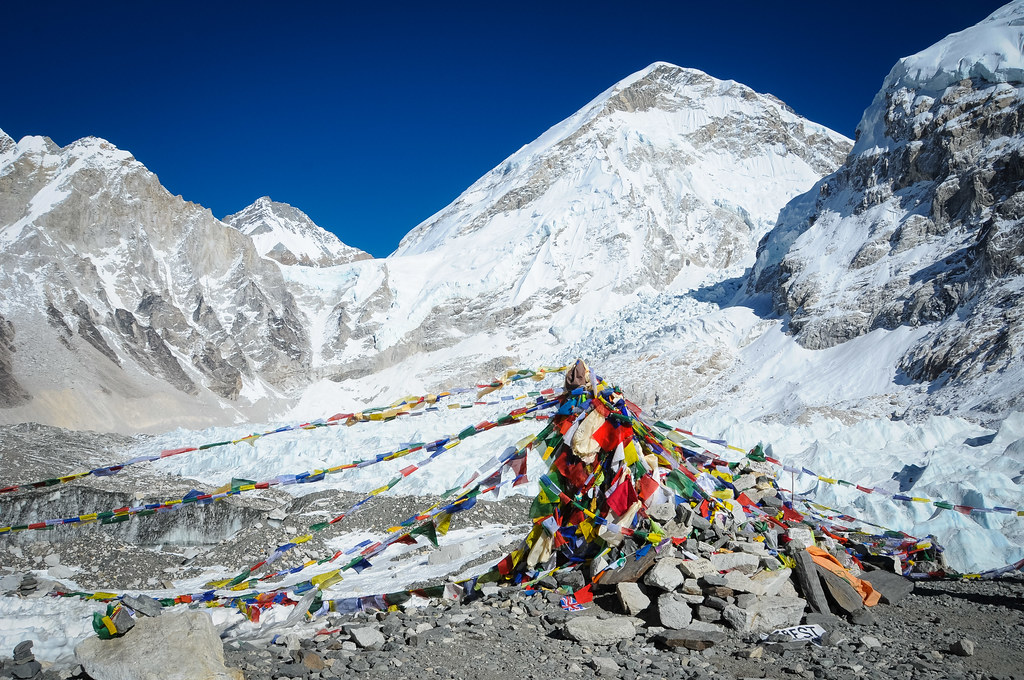
As one of the best treks in the world, the Everest Base Camp trip leads to Nepal’s most well-known traditional trekking destination. Situated 5,364 meters above sea level is Everest Base Camp. This is the location of one of Nepal’s two base camps. China is home to another base camp for Mount Everest.
The pristine scenery and tranquil alpine mood of the Everest Base Camp trek are highly acclaimed. The expedition begins with a flight from Kathmandu to Lukla. Trekking to Phakding, which is roughly a 3-hour ascent from Lukla, will occupy the first day. You will spend the night in Phakding and then travel to the famed Namche bazaar.
It is renowned for its beautiful mountain vistas, culture, and hospitality for sherpas. After spending one day in Namche becoming acclimated, you will hike to Tengboche and Dingboche. You will need to spend one night in Dingboche readjusting to the continuously fluctuating elevation, thus you will need to acclimate there. As a result, you must take into account the difficulty of the Everest Base Camp.
Another stop along the way is Lobuche. You will spend the night in Lobuche and then walk to Everest Base Camp and Gorak Shep. One of the day’s highlights is touring some of the most well-known eight-base thousand camps in the world. You will first see the base camp before arriving at Kala Patthar.
One of the most well-liked vantage points in the Everest region is Kalapthhar, which offers expansive views of the Khumbu Himalayas. You will then walk through Namche and Pheriche before reaching Lukla. A flight return to Kathmandu completes the Everest Base Camp experience.
Overview of the Trek to Everest Base Camp
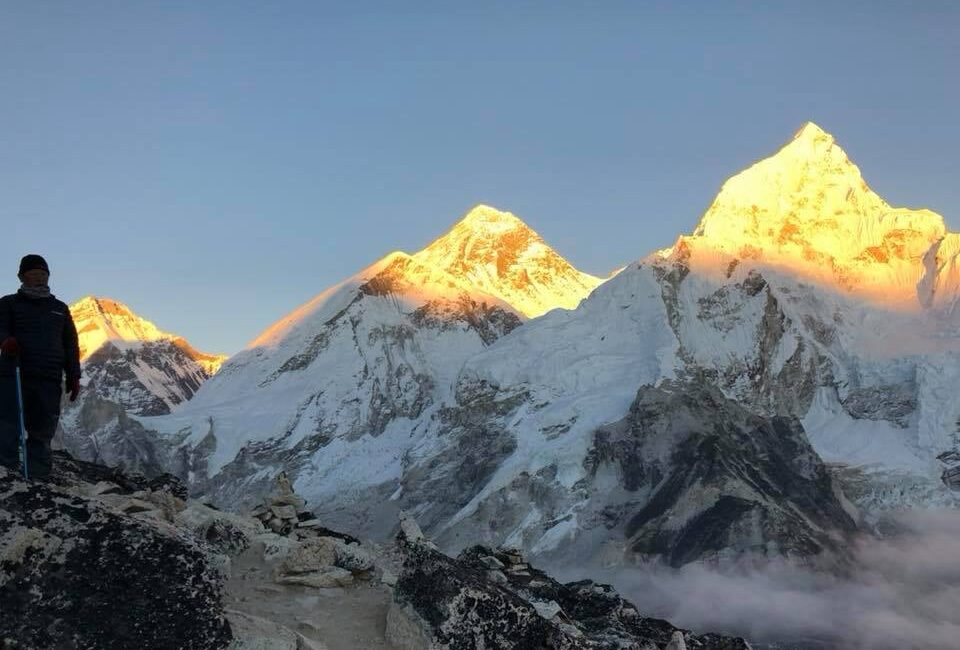
Day 01: Kathmandu Arrival
Day 02: Kathmandu Sightseeing and Trek Preparation
Day 03: Fly to Lukla, Trek to Phakding
Day 04: Phakding to Namche Bazaar
Day 05: Acclimatization in Namche Bazaar
Day 06: Namche to Tengboche
Day 07: Tengboche to Dingboche
Day 08: Dingboche Acclimatization
Day 09: Dingboche to Lobuche
Day 10: Lobuche to Gorak Shep and Everest Base Camp
Day 11: Hike to Kala Patthar, trek to Pheriche
Day 12: Pheriche to Namche
Day 13: Namche to Lukla
Day 14: Flight to Kathmandu
Day 15: Departure
Cost of Trekking to Everest Base Camp
The closest one can go to scaling the highest mountain in the world without actually climbing it is by trekking up to Mount Everest’s base camp. It is also significantly less expensive to trek to the base camp than to summit Everest.
The cost of the trek to Everest Base Camp is subject to change. The trip might cost between $2,099 and $4,500, depending on the route, the outfitter, and their services. The helicopter return luxury trekking package may set you back a little more than the other options.
The cost will rise to $4,500 if you wish to spend a few nights at Everest Base Camp following your expedition.
It is impossible to establish with certainty whether or not to offer flat charges because the needs of travelers ultimately determine the overall cost. It can cost anywhere from a few dollars to several thousand dollars to go trekking in Nepal’s numerous hilly regions, not considering the price of international airfare.
We’ll make an effort to cover every detail of the price of trekking to Everest Base Camp and the factors that affect the variations in prices provided by various operators worldwide.
How Tough Is the Trek to Everest Base Camp?
The Everest Base Camp Trek is a moderately difficult one. Trekkers with sufficient physical fitness and prior trekking experience can easily finish this walk. It is feasible to reach the base camp of Mount Everest, but the ascent can be difficult because of severe altitude sickness and other physical difficulties.
If certain safety precautions and health measures are followed during the trek, altitude sickness, and other difficulties can be avoided.
Mountain Sickness
Medical news today states that headaches, nausea, vomiting, and dizziness are common symptoms of High Altitude Sickness (HAS). Higher elevations are associated with a higher prevalence of height sickness, and correspondingly, a higher severity of symptoms. Individuals who quickly reach elevations above 2,500 meters have altitude sickness (8,200 feet).
Many people are aware that breathing difficulties or shortness of breath can result from being at a high altitude. What can happen to your body when you spend time at an altitude is only the beginning (symptoms of altitude sickness include headaches, dizziness, and shortness of breath).
An increased risk of blood pressure disorders due to high altitude might also result in heart difficulties. High altitude sickness (HAS) is a dangerous condition that some people get that can even be fatal at very high altitudes. Therefore, failing to adequately prepare yourself increases the difficulty of reaching Everest Base Camp.
When traveling at exceptionally high elevations, several other problems could occur in addition to altitude sickness. Dehydration, high-altitude pulmonary edema, and frostbite on your fingers, toes, and face (despite the heat) are all potential outcomes. At its worst, this disease can kill you.
Khumbu Cough
In the Khumbu region of Nepal, hikers and trekkers frequently contract the respiratory illness known as “Khumbu cough.” The name of this location comes from the Khumbu Sherpa people that live there. 2009.
The tough, dry cough known as Khumbu cough can worsen and last for up to four weeks. There is usually little mucus or phlegm generated when coughing, and it can induce choking or even gagging. There may be times when you sneeze as well. Therefore, failing to adequately prepare yourself increases the difficulty of reaching Everest Base Camp.
Numerous things can lead to a Khumbu cough. The most common cause of the illness is the “coughing tick,” which is the larva of a midge insect that feeds on respiratory secretions from humans and animals, causing discomfort and infection. Less common causes include viral illnesses like influenza and bacterial infections like group A streptococcal bacteria and some other strep strains (Streptococcus pneumonia).
Treatment for Khumbu cough is nonexistent, except for supportive care. It’s imperative to get enough sleep and stay hydrated. Therefore, failing to adequately prepare yourself increases the difficulty of reaching Everest Base Camp. Two painkillers that may help are ibuprofen and paracetamol (acetaminophen).
It is not advisable to use cough suppressants as they may cause airway damage by suppressing the cough reflex. Antibiotics are useless in this case and could make the germs more resistant. Therefore, failing to adequately prepare yourself increases the difficulty of reaching Everest Base Camp.
Altitude sickness and coughs have occasionally been linked, particularly when additional symptoms are present. Common symptoms include nausea, vomiting, lethargy, and difficulty concentrating. In severe situations, victims may also experience dyspnea and dyspnea, especially at heights higher than 5,000 meters.
Trail Condition
When hiking, unfavorable trail conditions are a commonplace fear that may stem from several sources. Extreme weather occasions like rain or snow are a number of the reasons, as are natural disasters like avalanches and rockfalls.
Several elements should come into play to keep path situations throughout treks. Planning and navigation come first. Proficiency in navigating is essential whilst hiking and may rescue individuals from perilous circumstances. Making decisions that lessen the risk of trail conditions may be aided by way of expertise in weather and terrain variables.
The second important component is a nicely deliberate experience that includes studying the path and understanding the climate and different factors. The capability to discover injuries and know a way to treat them is made possible by way of primary first resource training, which is the 1/3 aspect.
The fourth component is being privy to the environment and weather, mainly regarding weather-associated dangers like rockfalls and avalanches, which can be one of the most frequent motives for damaging path situations when trekking. Therefore, failing to adequately put together yourself will increase the issue of Everest Base Camp.
There are not any challenging navigational or topographical factors at the Everest base camp trek. There are shops and teahouses along the nicely trod path, so you won’t have any hassle finding a pleasing spot to stay.
Conclusion
The Khumbu place remains a famous vacation spot for hikers regardless of its demanding situations. The most frequent contamination experienced by way of hikers is altitude illness, which is preventable with bodily instruction before starting. You can also prevent altitude illness by extending your day of acclimatization.
In an emergency, there are lots of scientific employees ready to save your life with the aid of helicopters, but it’s always an excellent concept to have stable coverage insurance. In a similar approach, to stroll extra well all through the adventure, a balanced weight loss program is vital.
Recent Posts
